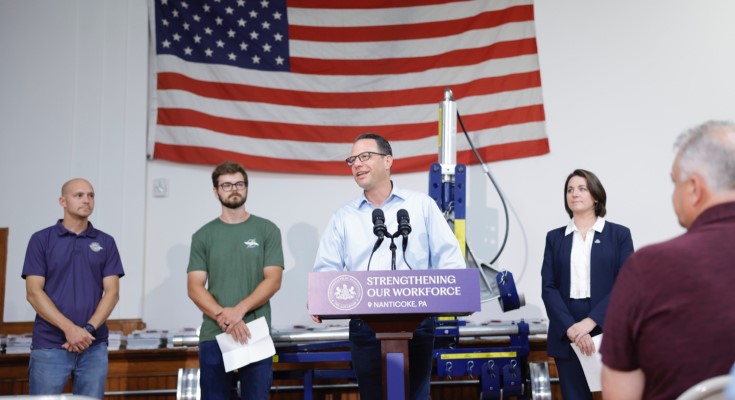
Governor Josh Shapiro has launched a new workforce development strategy aimed at addressing significant labor shortages while enhancing access to sustainable employment across Pennsylvania. This initiative, introduced through the Pennsylvania Workforce Development Board, seeks to foster collaboration among government, educational institutions, labor organizations, and industry leaders to equip residents with the skills necessary for emerging job opportunities.
The plan identifies workforce development as essential for Pennsylvania’s economic growth. It focuses on targeted investments in training and education to meet the evolving needs of employers. Key sectors highlighted include healthcare, advanced manufacturing, energy, and technology, all of which are experiencing a high demand for skilled workers.
In his announcement, Governor Shapiro emphasized the pressing need for this initiative, pointing out that many employers are still struggling to find qualified candidates despite ongoing job creation. “We’re focused on building pathways that connect Pennsylvanians with the skills they need to succeed in good-paying jobs right here in our Commonwealth,” he stated.
Key Components of the Initiative
The workforce strategy includes several critical components. It aims to modernize training programs by aligning curricula with current workforce demands and expanding access to apprenticeships and on-the-job learning. The administration also plans to address barriers that prevent individuals from entering or remaining in the workforce, such as childcare issues and transportation challenges.
The U.S. Department of Labor will review the updated workforce plan, as it requires states to periodically revise and submit their strategies. This plan was developed through extensive consultation with stakeholders across Pennsylvania, including business leaders, labor representatives, educators, and workforce development professionals.
Nancy Walker, the Secretary of Labor & Industry, highlighted the importance of this collaborative approach. “This plan reflects the voices of Pennsylvanians from every corner of the state. It’s about building a system that not only serves workers and employers today but also anticipates the jobs of tomorrow,” she remarked.
A Living Document for Future Needs
The Workforce Development Board has stated that the Shapiro Administration is committed to treating this plan as a “living document,” which will be updated as labor market conditions change. Future revisions will emphasize strengthening career readiness programs for youth, expanding partnerships with community colleges, and integrating new technologies into training models.
As Pennsylvania faces one of the tightest labor markets in decades, officials assert that the updated workforce strategy is vital for the state’s competitiveness in attracting businesses and ensuring long-term economic growth. The administration’s focus on collaboration and skill development aims to create a robust workforce that can thrive in a rapidly evolving job landscape.







